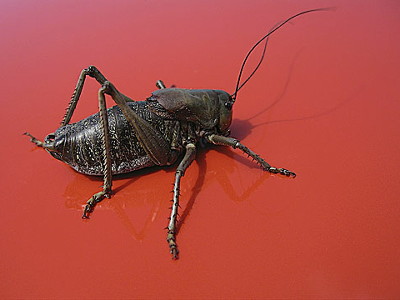The mysterious ecology of moles that 'female has a fine male genitalia after the estrous cycle' is elucidated

Mole is often deformed into a cute character in picture books and anime, but in reality, it is a fierce turf war in the basement. It is known that such mole females have a male-like body except during the estrus period, and as a result of analyzing the mole
The mole genome reveals regulatory rearrangements associated with adaptive intersexuality | Science
https://science.sciencemag.org/content/370/6513/208.abstract
Fierce female moles have male-like hormones and genitals. We now know how this happens.
https://theconversation.com/fierce-female-moles-have-male-like-hormones-and-genitals-we-now-know-how-this-happens-149174
It depends on the type of mole, but in most cases, female moles look the same as male moles and behave in the same way as males. Female genitals are masculine, with litoromegaly and vagina with little shape, but during the breeding season and mating season, testosterone levels drop, vagina is formed, mating and childbirth to hold.
Until now, how moles change sex has remained a mystery. However, the complete determination of the mole genome sequence revealed that two genes are involved in the 'mechanism of reproductive organ development and regulation of sex hormones.'

by
For most mammals, the combination of two sex chromosomes, the X and Y chromosomes, determines sex. This is due to the function of a gene called the Y chromosome sex-determining region gene (SRY) that exists on the Y chromosome . SRY activates the genes that express the testes and, conversely, inactivates the genes that express the ovaries, making the reproductive organs male.
At the same time, the Leydig cells contained in the testes produce testosterone. Testosterone builds muscle mass and creates visible gender differences, such as increased male genital formation and aggression. On the other hand, in the case of females, the hormone estrogen is produced from the ovaries.
However, a 1993 study found that mole females, unlike common mammalian females, develop 'gonads with both ovarian and testicular tissues' in the body.
The ovarian tissue of female moles produces eggs, which grows during the breeding season and shrinks after the breeding season. Testicular tissue, on the other hand, does not produce sperm, but is filled with Leydig cells that produce testosterone and grows larger than ovarian tissue outside the breeding season.
Until now, it was not known why testicular tissue was formed even though female moles do not have a Y chromosome and SRY is not expressed. However, as a result of genome analysis of moles, a mutation was found in the base sequence of the FGF9 (fibroblast growth factor) gene.

by
While the FGF9 gene is an essential gene for testis development, it also plays a role in inhibiting the expression of genes that determine ovarian development. In general mammals, the FGF9 gene is not expressed without SRY, but in mole females, FGF9 is expressed without SRY, resulting in testis development. Furthermore, looking at the base sequence of moles, it was also found that the DNA region immediately upstream of the part corresponding to FGF9 on the genome was inverted due to mutation. Due to this mutation, the regulatory sequence that should work is lost, and the FGF9 gene is expressed even in females.

Mutations were also found in the gene that expresses

by Audrey
To show whether this mutation in the genome sequence is involved in the phenomenon of male mogura females, the research team that conducted the genome analysis conducted an experiment to incorporate the same sequence into mice. It was confirmed that sex change and increased testosterone levels were actually caused.
It was once thought that all sexual development was determined by sex hormones secreted by the ovaries and testes. However, the discovery of the mechanism by which female moles become male has shown that sexual development is highly dependent on complex genetic combinations. In addition, research on the femaleization of moles suggests that there may be networks in which genes that are switches are involved in a complex manner in the background of human sexual development.
In addition to moles, hyenas are well known as mammals in which females become male. In the case of moles, the mutation of the causative gene was identified, but it seems that it is not well understood at the time of writing the article what kind of system hyenas are maleized.
Related Posts:







